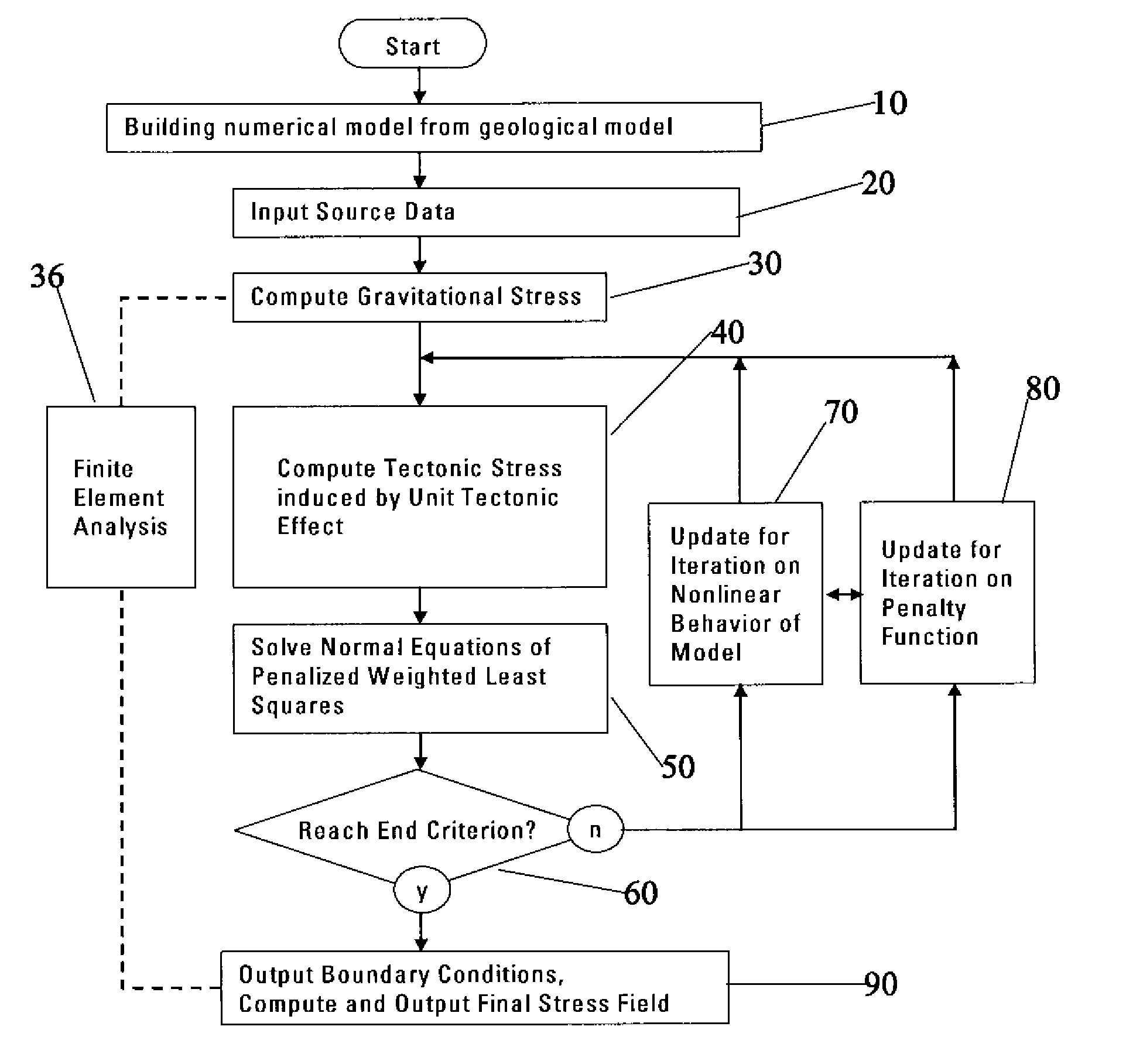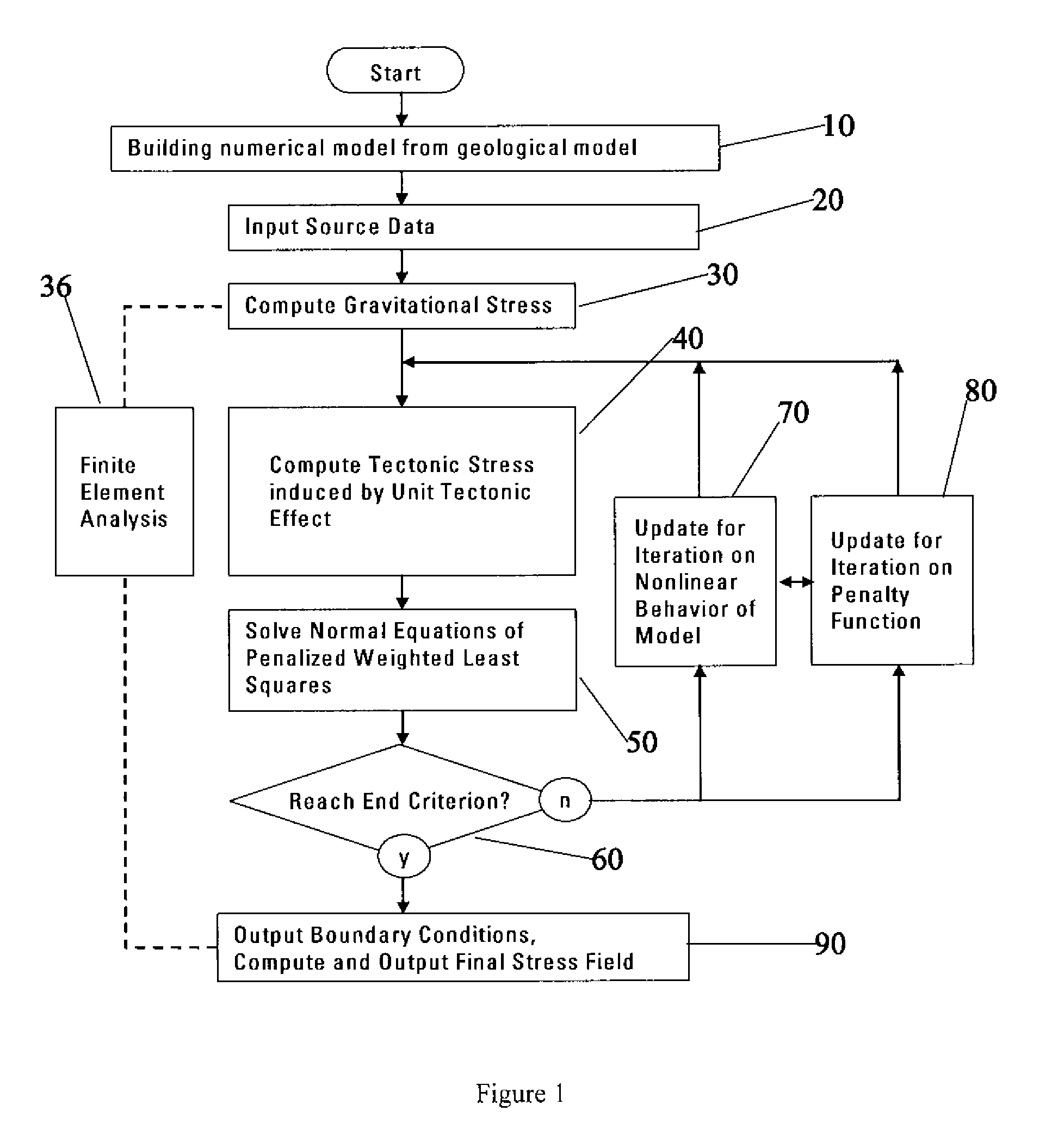Method and system to invert tectonic boundary or rock mass field in in-situ stress computation
- Summary
- Abstract
- Description
- Claims
- Application Information
AI Technical Summary
Benefits of technology
Problems solved by technology
Method used
Image
Examples
Embodiment Construction
[0018]This invention develops a new technique to invert the boundary conditions for rock mass field in-situ stress computation. The proposed inverting procedure is based on the physical assumption that the in-situ stress can be decomposed into gravitational, tectonic, thermal and residual components, where the tectonic component can be simulated by applying the appropriate horizontal stress or displacement at the far-field boundary by using numerical tools, such as Finite Element Method (FEM) and Finite Difference Method (FDM). The Penalized Weighted Least Squares Method (PWLS), an optimization algorithm that includes both mathematical and physical fittings of the model prediction with the source data input for inversion, is developed to invert the tectonic boundary conditions and then to reproduce the rock mass field in-situ stress.
[0019]The optimization algorithm includes two parts: Weighted Least Squares Method, adopted to obtain a mathematical best-fit by taking into account the...
PUM
 Login to View More
Login to View More Abstract
Description
Claims
Application Information
 Login to View More
Login to View More - R&D
- Intellectual Property
- Life Sciences
- Materials
- Tech Scout
- Unparalleled Data Quality
- Higher Quality Content
- 60% Fewer Hallucinations
Browse by: Latest US Patents, China's latest patents, Technical Efficacy Thesaurus, Application Domain, Technology Topic, Popular Technical Reports.
© 2025 PatSnap. All rights reserved.Legal|Privacy policy|Modern Slavery Act Transparency Statement|Sitemap|About US| Contact US: help@patsnap.com



